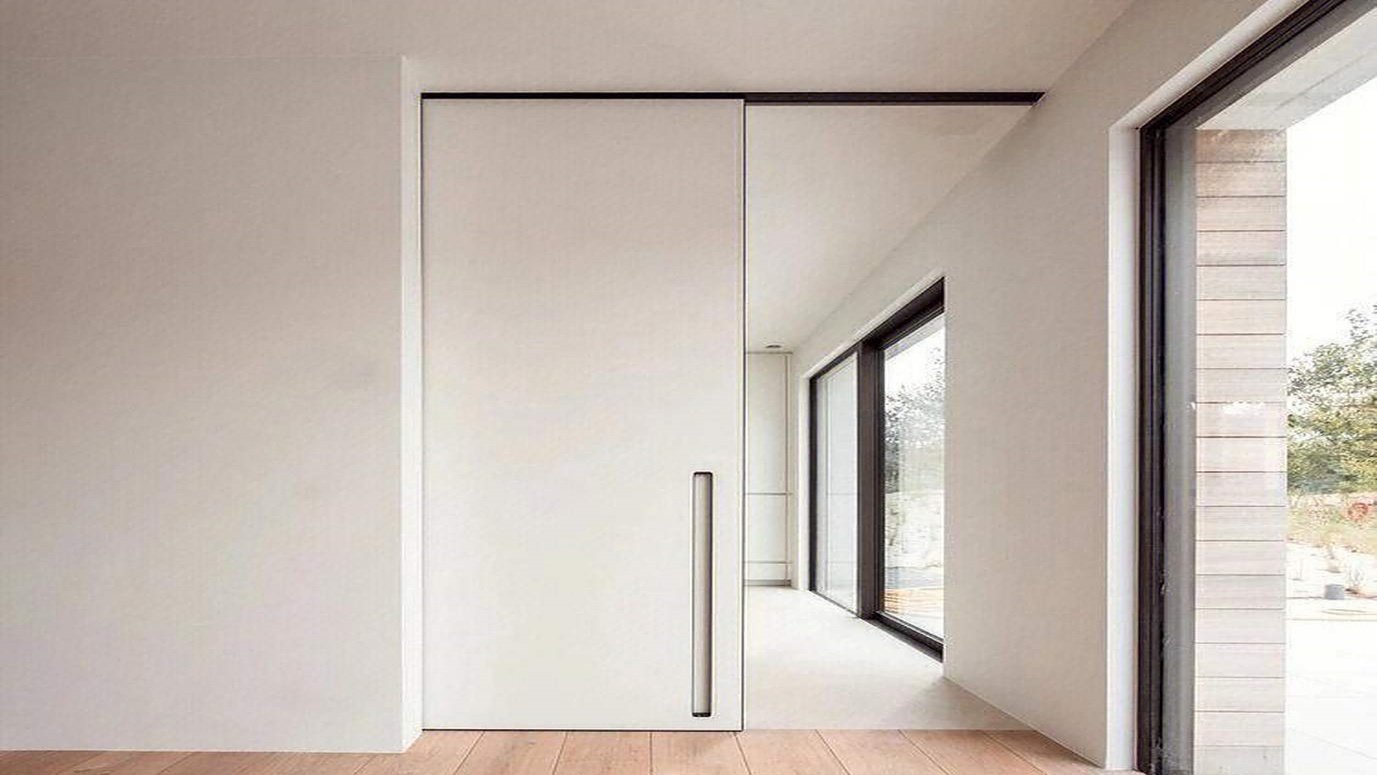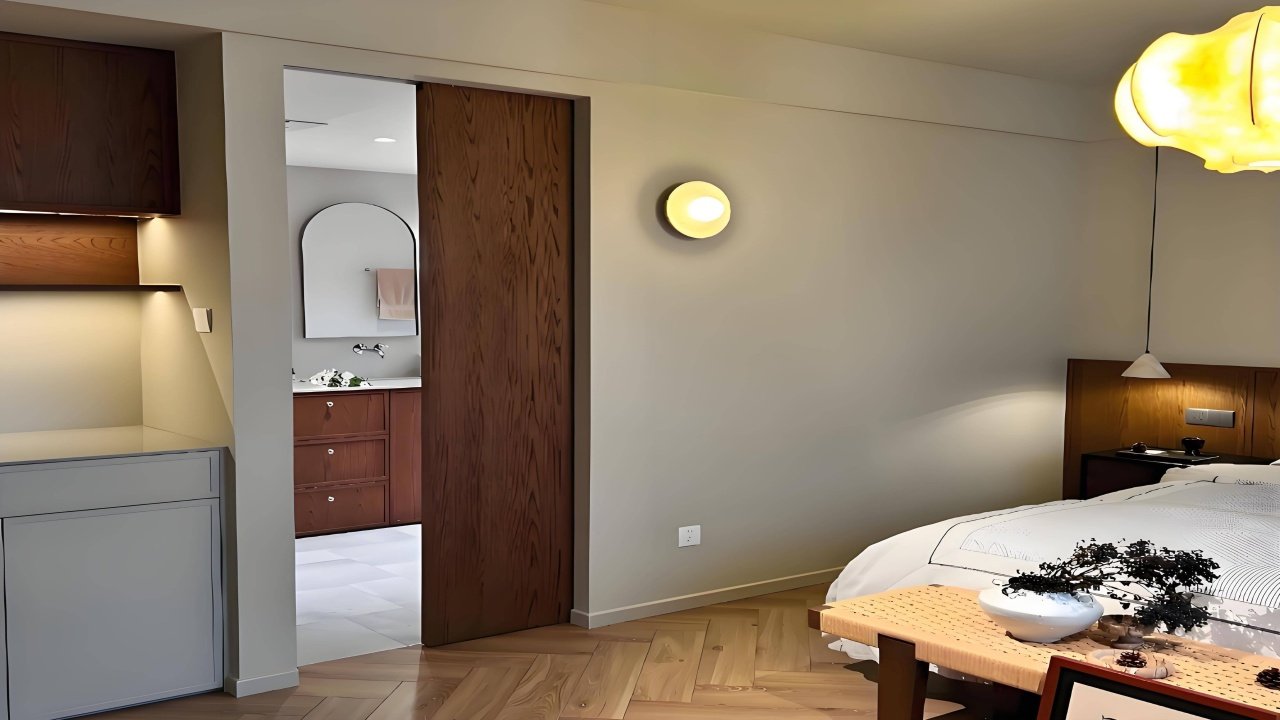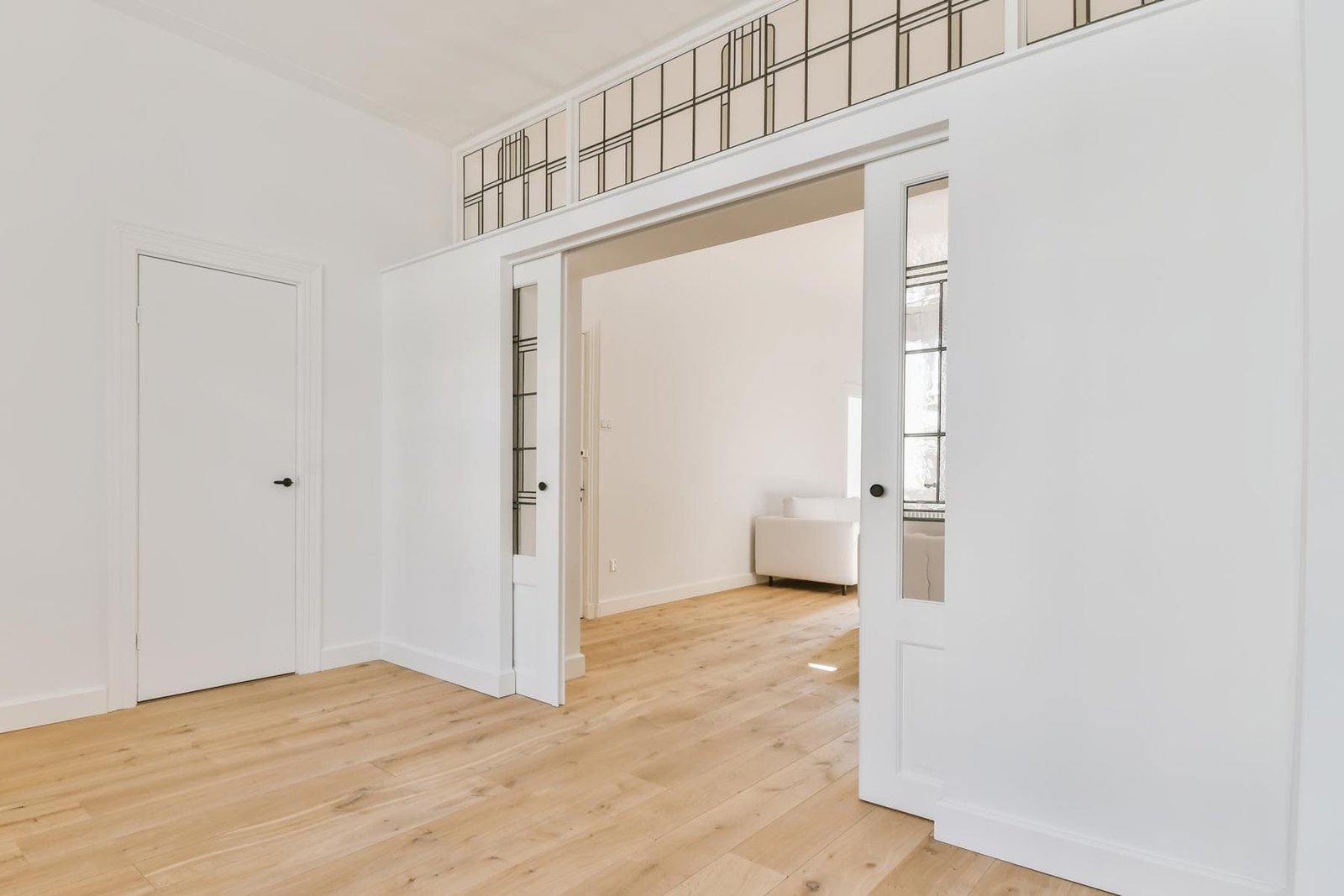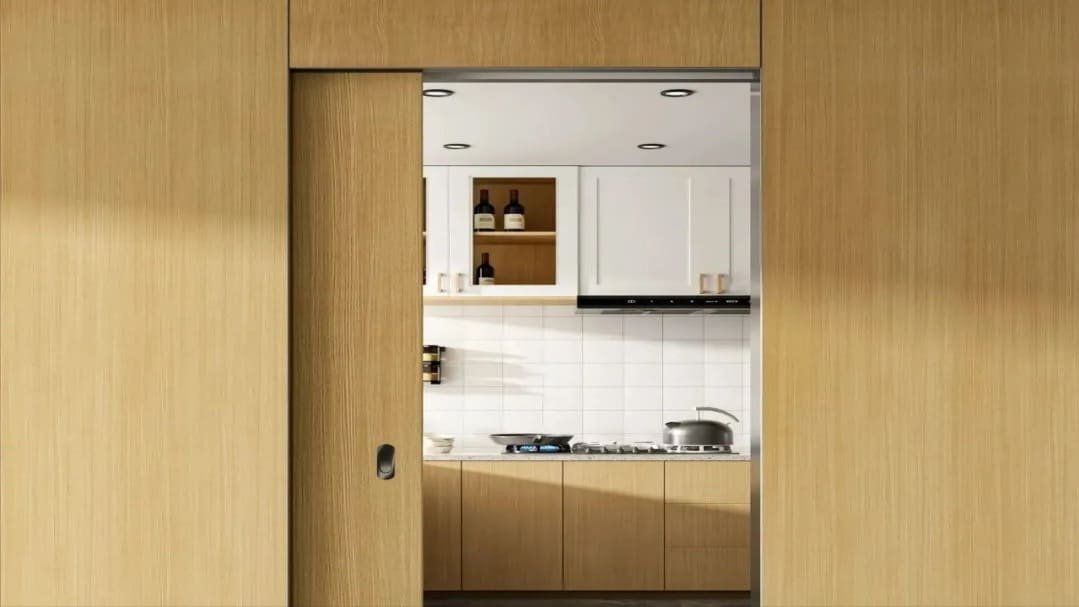A misaligned pocket door gets stuck, looks terrible, and means costly rework. The secret to avoiding this is precision during the initial track installation, a step I’ve perfected over years.
To prevent misaligned pocket door tracks, start with a plumb and level rough opening. Use high-quality hardware rated for your door’s weight and fasten it securely. Most importantly, install the track perfectly straight with a level, double-checking your work before closing the wall.

In my work at opensliding, I’ve supplied hardware for thousands of projects. I’ve seen firsthand how a few minutes of careful measurement at the start can save hours of frustrating repairs later. The difference between a door that glides silently and one that grinds and sticks often comes down to the initial setup of the track. A misaligned track is the root cause of almost every pocket door problem. But don’t worry, it’s an issue that is completely avoidable. Let’s walk through how to handle the most common challenges, starting with how to fix a door that’s already giving you trouble.
How do you fix a misaligned pocket door?
Your beautiful pocket door is grinding to a halt or hanging crooked. It’s frustrating, and you know accessing the track inside the wall is a pain. I can help.
To fix a misaligned pocket door, first remove the door from its hangers. Check if the track is level and all fasteners are tight. Inspect the rollers for damage and replace if needed. Finally, rehang the door and adjust the hangers to make it plumb and level.

When a client like Jacky calls me about a misaligned door, the first thing I tell him is not to panic and start tearing open the drywall. The fix is often simpler than you think and can be done through the existing opening. The key is to work methodically. Don’t just adjust one thing; check the entire system from the track to the rollers. It’s about finding the root cause, not just treating the symptom.
Identify the Source of Misalignment
Before you grab any tools, slide the door back and forth. Where does it stick? Does it rub at the top, bottom, or side? Look at the gap between the door and the jambs. Is it even? Answering these questions helps you diagnose the problem. A door rubbing at the top might mean the track has sagged, while rubbing at the side could be a plumb issue.
A Step-by-Step Correction Process
Here is the simple process we recommend to our partners for fixing these issues without major demolition.
| Step | Action | My Professional Tip |
|---|---|---|
| 1. Remove Door | Most systems have hangers that can be detached from the door. Lift and unhook the door. | Take photos of the hardware before you remove it. It makes reassembly much easier. |
| 2. Inspect Track1 | Use a good level to check the track inside the pocket. Check for loose screws. | A small inspection camera on your phone can be a huge help to see all the way back. |
| 3. Check Rollers2 | Examine the rollers that you just unhooked. Do they spin freely? Are they cracked or worn? | This is the most common point of failure. If in doubt, replace them. It’s a cheap part. |
| 4. Rehang & Adjust | Hook the door back onto the rollers. Use the adjustment nuts on the hangers to raise or lower each side. | Adjust until the gap along the door jamb is perfectly even from top to bottom. |
How to keep a pocket door from coming off track?
A pocket door that jumps its track is a nightmare. The door is stuck, the space is unusable, and you’re facing a major repair. Let’s make sure this never happens.
Use high-quality hardware that is properly rated for your door’s weight. Correctly install the door stops and floor guides, as they are essential. Also, periodically check that all fasteners on the track and hangers are tight to prevent any movement that could lead to derailment.

I once visited a new luxury apartment complex where the developer used cheap, lightweight hardware on heavy, solid-core doors to save a few dollars per unit. Within six months, they had dozens of service calls for doors coming off the track. The cost of the repairs and damage to their reputation was far greater than the initial savings. This is a lesson I share with all my B2B clients: investing in the right hardware isn’t an expense, it’s insurance against future problems and unhappy customers.
The Role of Quality Hardware
The track is the backbone of the system. A weak aluminum track can bend or sag under the weight of a heavy door, creating a low spot where the rollers can jump out. Our heavy-duty tracks3 at opensliding are designed to prevent this. Similarly, the rollers are critical. Look for roller sets with ball bearings and durable wheels. They provide a smoother glide and are much less likely to break or bind up, which is a common cause of derailment.
Components That Prevent Derailment
It’s not just about the big parts. A few small, often overlooked components are your best defense against a door jumping the track.
- Door Stops: These are installed inside the track to prevent the door from being pulled too far out of the pocket. If a door is pulled out past the rollers, it will fall. The stops physically prevent this from happening.
- Floor Guides4: A small, simple guide screwed to the floor keeps the bottom of the door from swinging left or right. This side-to-side movement is a primary reason why top rollers get misaligned and pop off the track.
- Secure Fasteners: Over time, the vibration from opening and closing a door can loosen the screws holding the track. A loose track can shift and cause a derailment. During installation, make sure every screw is tight and hits solid wood framing.
How to shim a pocket door?
The door frame isn’t perfectly square, and now your pocket door rubs as it closes. It’s a very common issue, especially in older buildings. Shimming is the professional secret.
Shims are thin wedges used to make fine adjustments. To shim a pocket door, place shims between the pocket frame studs and the wall’s framing. This ensures the pocket is perfectly plumb and the track is perfectly level, so the door hangs straight and operates smoothly.

People think walls are straight, but as an installer or contractor, you know the truth. They are rarely perfectly plumb or level. You can’t force the hardware to fit an imperfect opening; you have to create a perfect opening for the hardware. Shims are the tools that allow you to do that. Trying to install a pocket door frame without shims is a recipe for a door that binds, rubs, or hangs crooked. It’s a step that a true professional never skips.
Why Shimming is Not Optional
A pocket door5 hangs from a single track at the top. If that track isn’t perfectly level, gravity will cause the door to slide open or closed on its own. If the vertical studs that form the pocket aren’t perfectly plumb, the door will rub against them as it slides. Shims correct these imperfections in the rough framing. By inserting shims6, you create a perfectly square and true space for the door to slide into, regardless of what the wall around it is doing.
A Practical Shimming Guide
Using shims6 is simple, but it requires precision. Here’s where to focus your attention.
| Location to Shim | Purpose | Best Practice |
|---|---|---|
| Behind Split Studs | Makes the pocket perfectly plumb and an even width from top to bottom. | Use a level on the studs. Add shims6 at the top, middle, and bottom screw points until it’s perfectly vertical. |
| Under the Header/Track | Guarantees the track is perfectly level, preventing ghost sliding. | Use a long 4-foot or 6-foot level for accuracy. Do not trust your eye for this. |
| Around the Jambs | Ensures the finished door jambs are plumb and create an even gap with the door. | Shim behind the nail locations to keep the jamb from bowing when you nail it in place. |
Where to place pocket door guides?
Your pocket door feels wobbly at the bottom when you move it. This feels cheap and can damage the door’s finish over time. A small, properly placed guide is the fix.
Pocket door guides are installed on the floor, right at the edge of the wall opening. They engage with a groove on the bottom of the door, preventing it from swinging and keeping it perfectly aligned with the track above. This ensures a smooth, stable slide every time.

A pocket door hanging only from the top track is unstable. It’s like holding a painting by one corner. The slightest push can make it swing. The floor guide is the second point of contact that provides essential stability. Forgetting this small part is a common mistake I see from inexperienced installers. It turns a high-end installation into something that feels flimsy and cheap. A stable, solid-feeling door is a sign of a quality job, and the floor guide is what makes that happen.
The Importance of Bottom Guides
The main job of the guide is to stop the door from swinging in and out of the pocket. This wobble, or "racking," not only feels bad to the user but also causes real problems. It can cause the door to rub against the pocket frame, scratching the finish. In extreme cases, a violent swing could even be enough to pop the rollers off the track above. The guide anchors the bottom of the door, forcing it to slide in a straight line. It’s a tiny part that has a huge impact on the door’s performance and longevity.
Installation Best Practices
Getting the placement just right is critical for the guide to work effectively without causing other issues.
- Location: The guide should be placed directly on the floor at the opening of the pocket. It needs to be positioned so it’s hidden from view when the door is fully closed.
- Alignment: This is the most important step. The guide must be perfectly aligned directly underneath the overhead track. The best way to do this is to hang the door first, let it hang naturally, and then mark the guide’s position on the floor based on where the door sits.
- Groove: For the guide to work, you must cut a groove into the bottom edge of the door. This groove should be slightly wider and deeper than the guide itself. This allows the door to move freely without binding or rubbing on the guide. A tight groove will cause friction and make the door hard to slide.
Conclusion
A perfect pocket door installation comes down to a level track, quality hardware, and attention to detail. Get these basics right, and your door will work flawlessly for years.
Understanding how to properly inspect a door track can prevent future issues and ensure smooth operation. ↩
Maintaining door rollers is crucial for functionality; learn tips to keep them in top shape. ↩
Explore this link to understand how heavy-duty tracks enhance durability and performance, ensuring your sliding doors operate smoothly. ↩
Learn about the importance of Floor Guides in maintaining door alignment and preventing derailment, ensuring safety and functionality. ↩
Understanding pocket doors can enhance your home design and functionality, making them a great space-saving solution. ↩
Exploring the use of shims can improve your DIY skills and ensure precision in your projects. ↩ ↩ ↩

